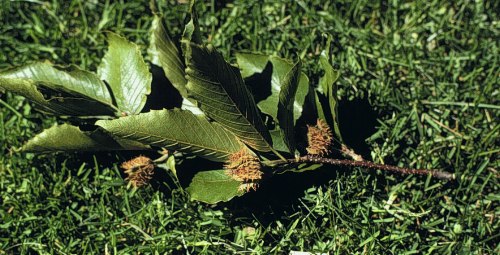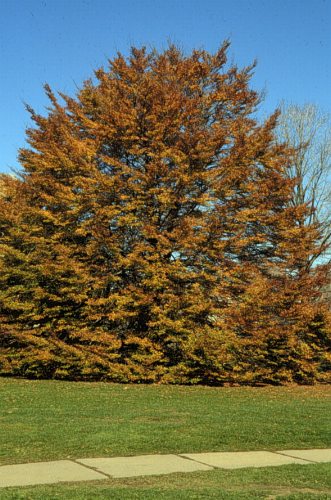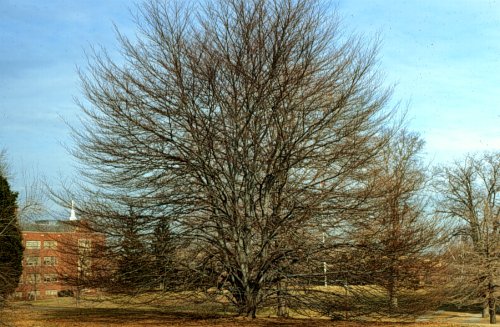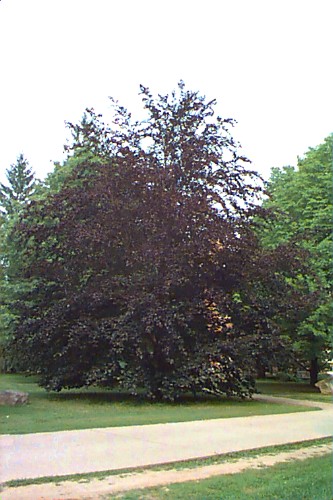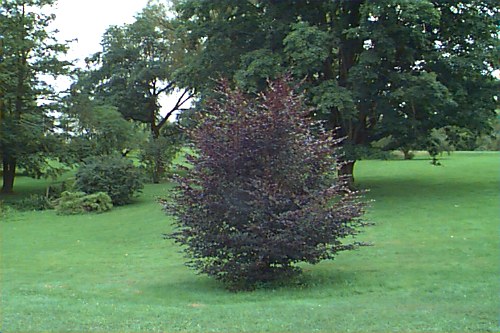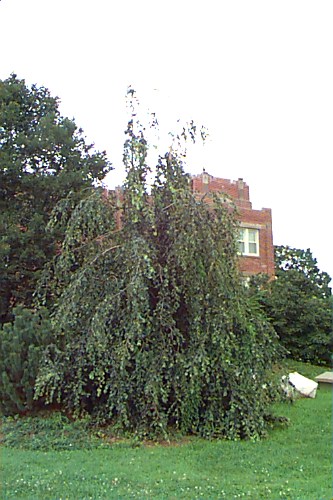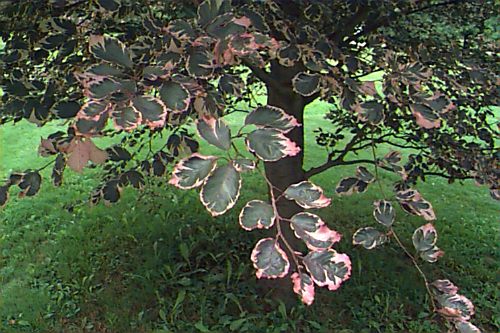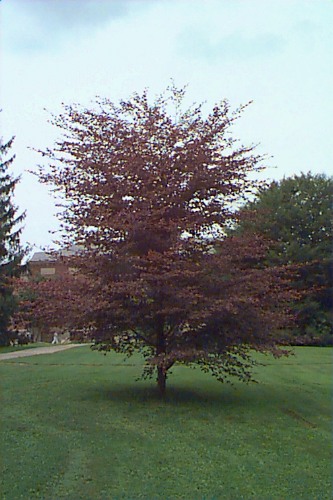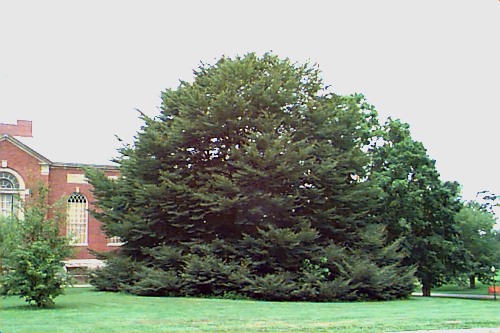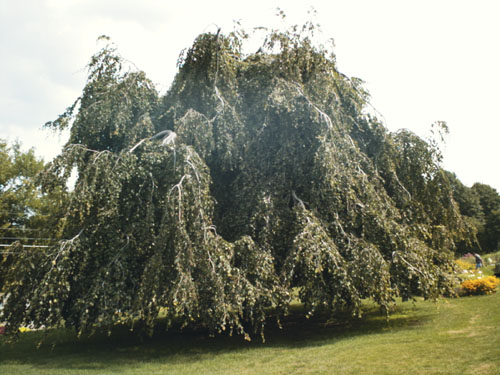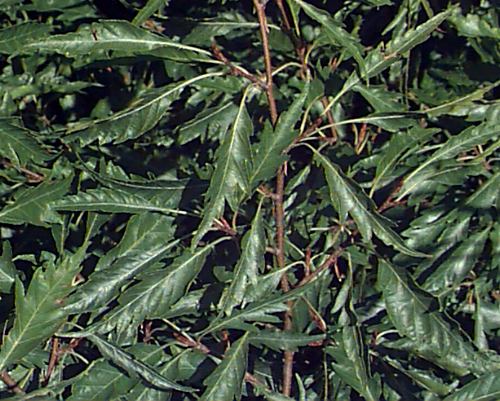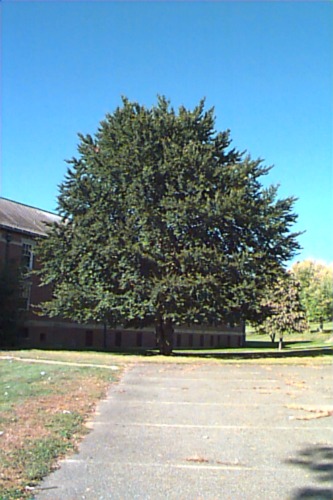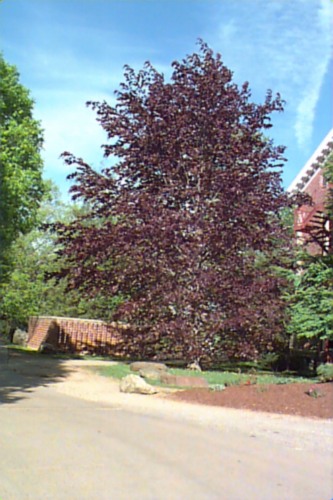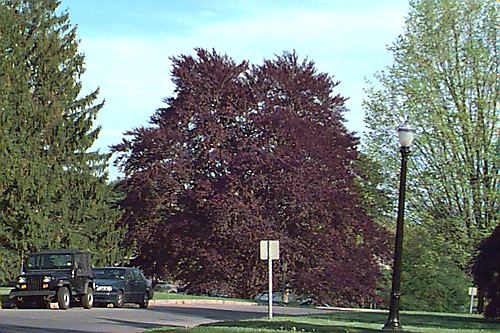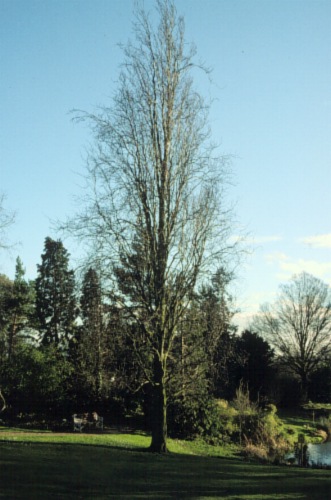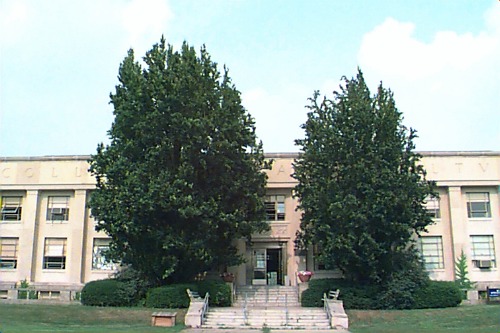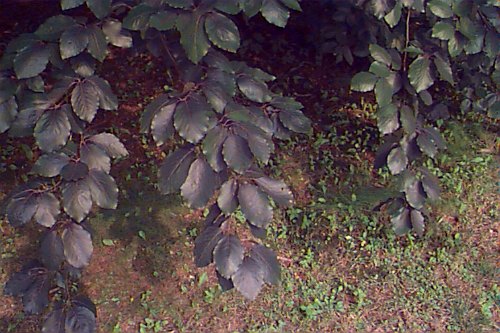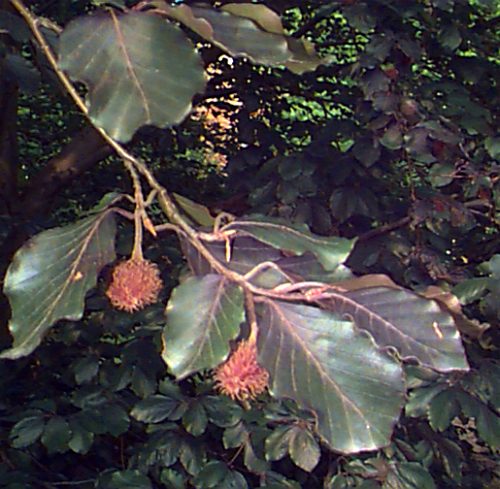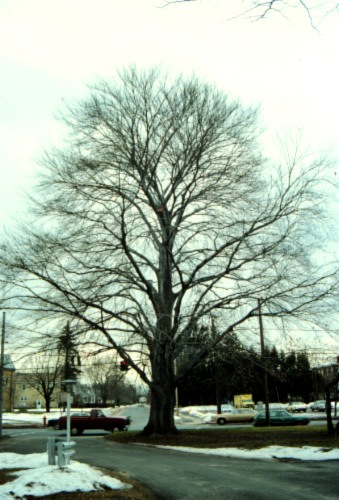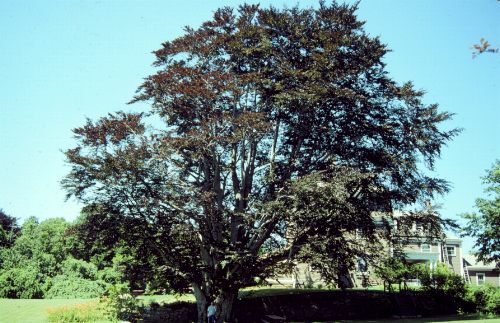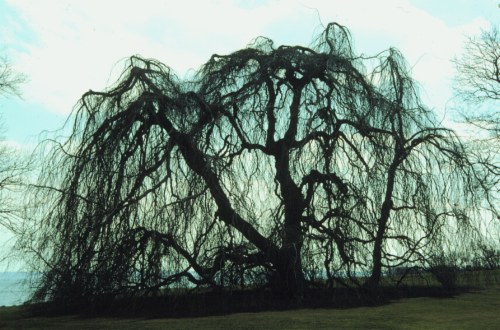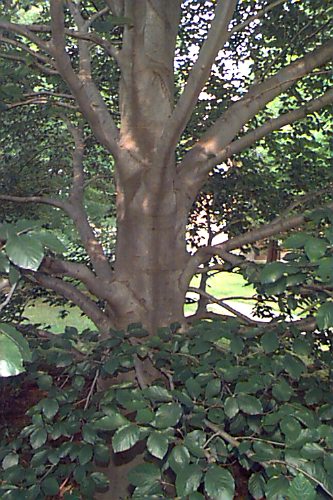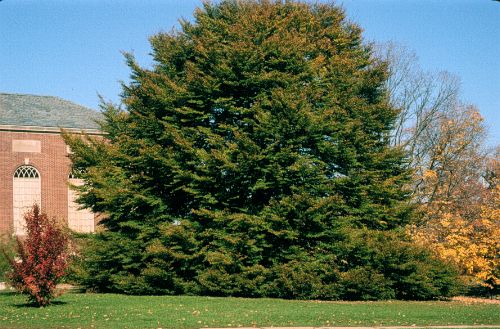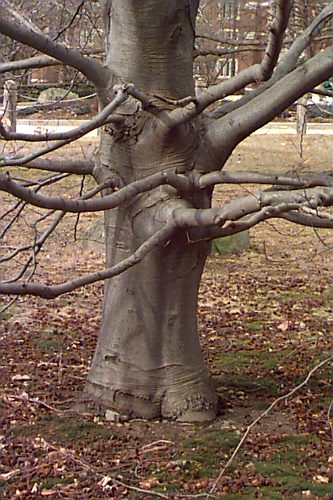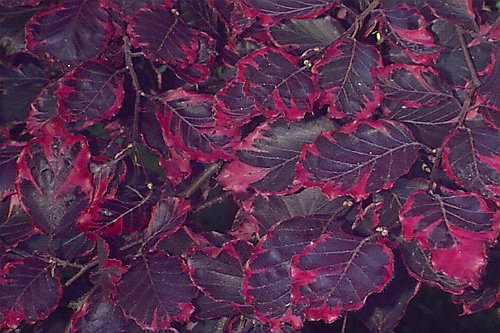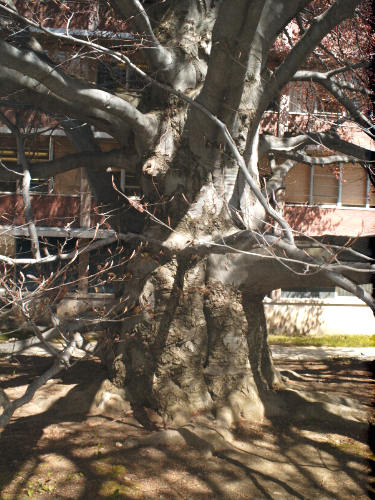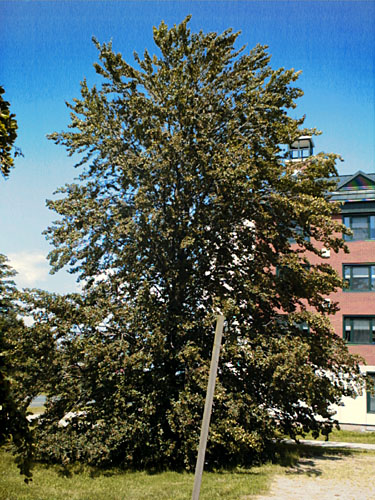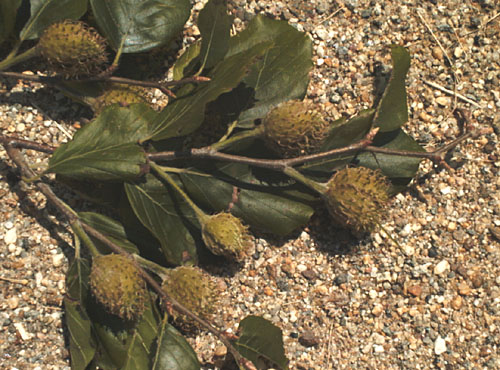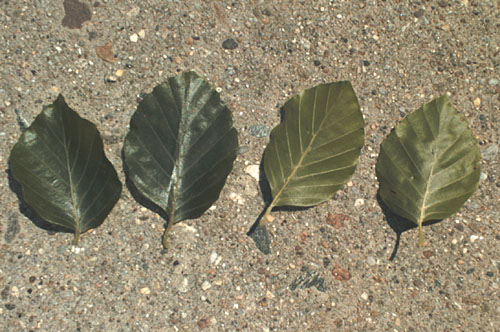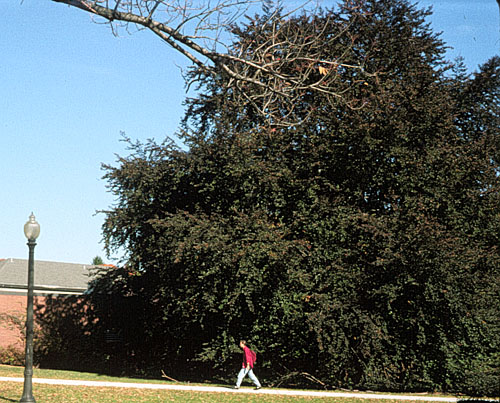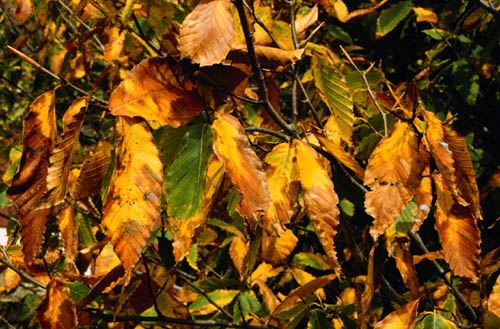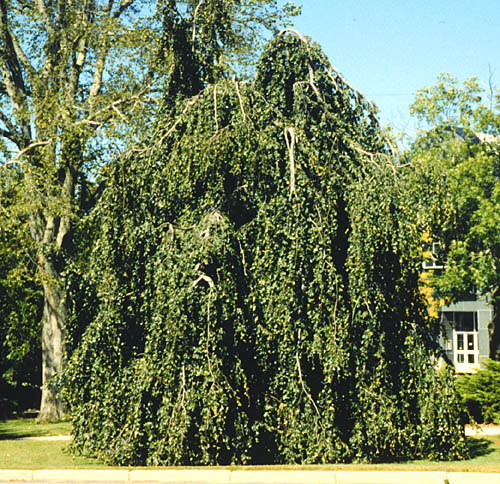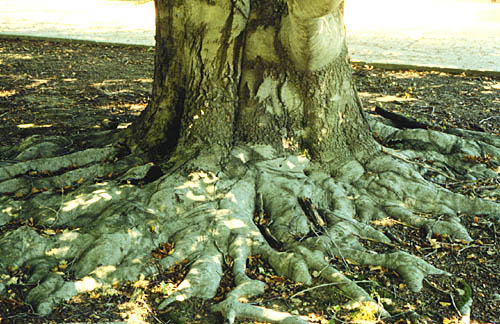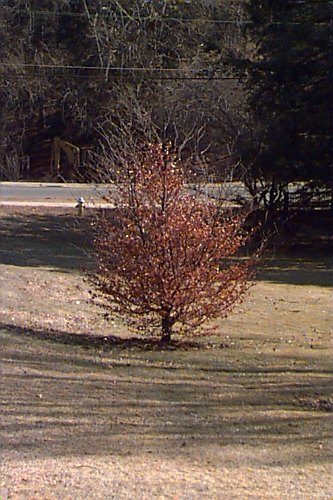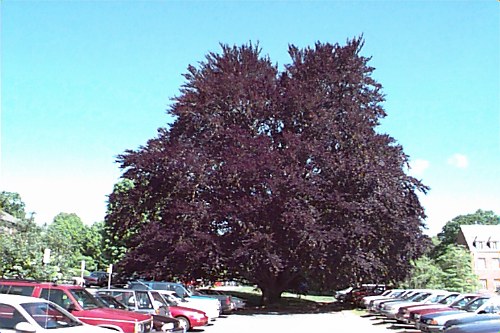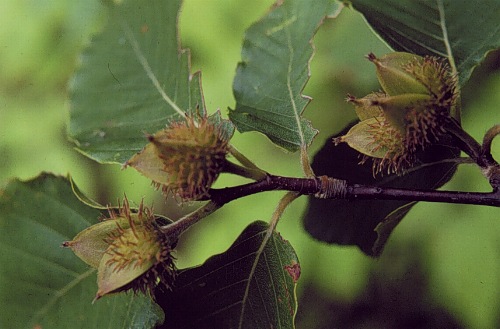Fagus sylvatica
European Beech, Common Beech
Fagaceae
ExpandHabitat
- native to Europe
- zone 4
- tree has been in cultivation for a long time
Habit and Form
- deciduous tree
- broad pyramidal shape
- trunk is short and branches generally touch ground
- 50' to 60' tall and up to 50' wide
- slow growth rate
- fine to medium texture
Summer Foliage
- alternate leaf arrangement
- simple leaves with wavy entire margins
- leaves are 2" to 4" long and approx. 2" wide
- glossy dark green leaf color, usually has a reddish tint
- 5 to 9 vein pairs
Autumn Foliage
- reddish bronze leaf color in fall
- very attractive
- leaves tend to persist through winter
Flowers
- monoecious
- usually flowers in April or Early May
- not ornamentally important
Fruit
- triangular nut
- nut is enclosed in a spiky involucre
- 4-lobed involucre usually contains 2 nuts
- found singly on erect pedicels
Bark
- light gray bark
- smooth
- wrinkled appearance to bark
- stems are olive-brown in color
Culture
- transplant during dormant season
- moist, well-drained, acidic soil
- does not like excessively wet soils
- full sun best
- shallow, wide root system
- prune in early summer or early fall
Landscape Use
- very attractive tree
- specimen
- naturalized areas
- large open spaces
- lawn tree
- parks
- golf courses
- hedge, with heavy pruning
Liabilities
- branches generally touch ground
- grass tends not to grow under tree
- does not like wet soils
- tends to sucker
- fruit can be a litter problem
- few minor pest problems including: powdery mildew, aphids, canker, and beech bark disease
ID Features
- wavy entire leaf margins
- smooth, gray wrinkled bark
- dead leaves persist on tree through winter
- tree is very wide and branches generally touch ground
- alternate leaf arrangement
- three-winged fruit in a 4-lobed spiky involucre
- long pointed buds
- 5 to 9 vein pairs
Propagation
- by seed
- by cuttings
Cultivars/Varieties
'Asplenifolia' (confused with and roughly similar to 'Laciniata') - This is a very common cultivar that bears cut leaves that are so fine as to appear fern-like (as with Asplenium, a fern genus). The leaves are lustrous green and may develop good yellow fall color. The habit is large and rounded.
'Dawyck' (also listed as 'Dawyckii' and 'Fastigiata') - This form originates from a tree found in Scotland. It is a fastigiate form with narrow form and upright branches, to 80' tall and perhaps 15' wide. The leaves are green on this selection.
'Dawyck Gold' and 'Dawyck Purple' - These two selections originate from 'Dawyck', but bear leaves that are yellow and purple, respectively.
'Pendula' (also known as f. pendula) - A cultivar that can differ markedly in appearance from specimen to specimen, 'Pendula' has weeping branches that may fall harshly or droop after extending outwards horizontally. Each individual tree is unique, and green leaves clothe specimens that can reach 50' tall and wider.
'Purple Fountain' and 'Purpurea Pendula' - These cultivars are weeping forms with purple leaves. They bear upright trunks with branches that hang gracefully. Among the slowest-growing forms, they are typically much more narrow than tall.
'Riversii', 'Rohanii' and 'Spaethiana' (also listed as 'Spathiana') - This trio represents the most common forms of standard F. sylvatica with deep-purple leaves (often known as Copper Beech). The color can be deep-purple to approaching black in spring and early summer, but it may fade slightly as the season progresses. The habit is rounded and the plant may grow to 50' tall and wide. These are very popular forms.
'Roseomarginata' (also listed as 'Tricolor' and 'Purpurea Tricolor') - This eye-catching selection is the most common variegated form of European beech. The leaves are purple with a wide margin of pink or cream, and the foliage is brightest in spring. By late summer, the lighter portions of the leaves may burn -- thus the plant appreciates some shade. It is a slower grower, reaching 30' tall in time.
'Tortuosa' (also listed as f. tortuosa) - This unusual form features contorted trunk and branches, giving the plant the look of a large weather-beaten bonsai. The leaves are green and not twisted. At maturity, the plant forms a large rounded mound of foliage to 15' tall.

